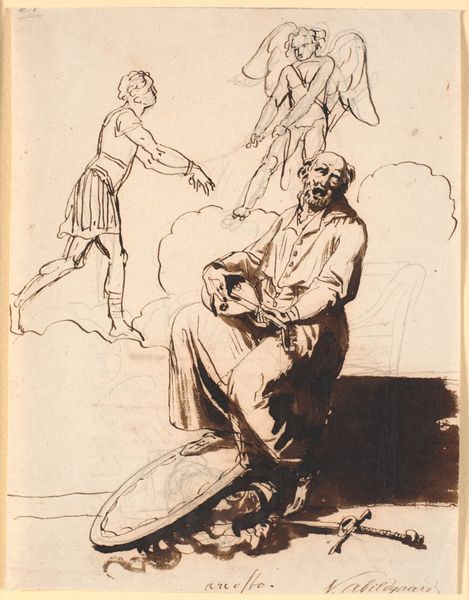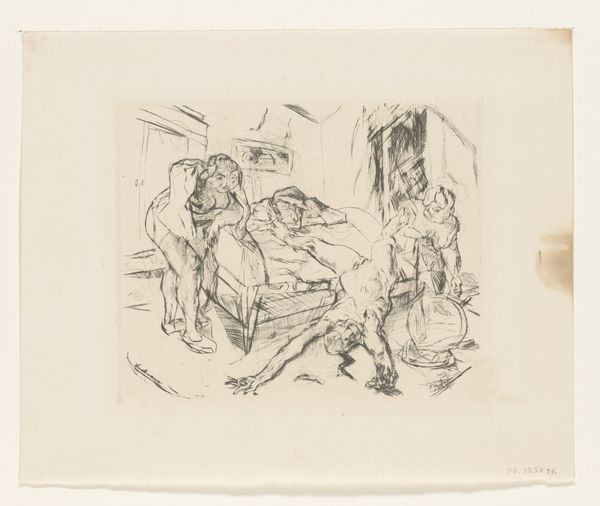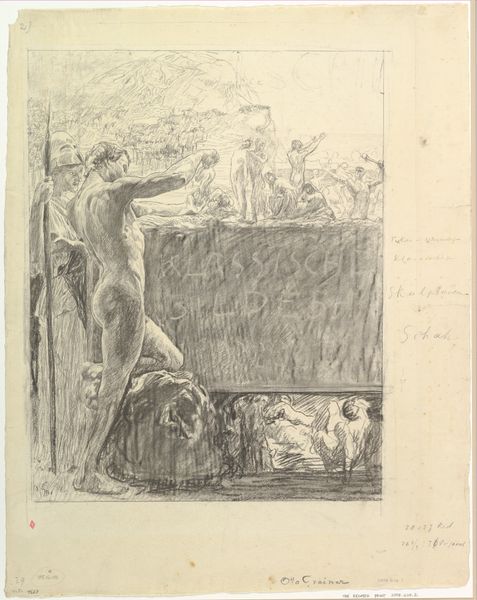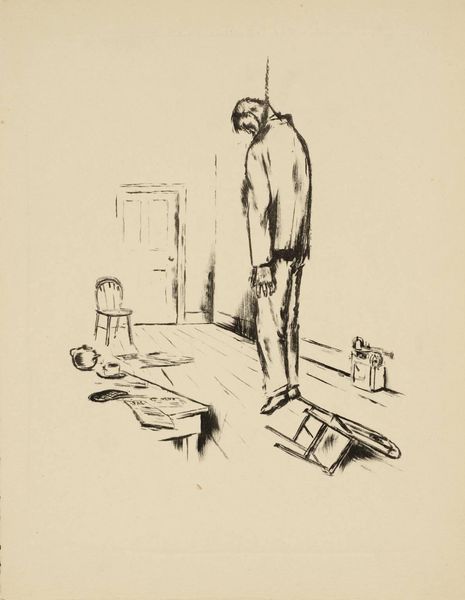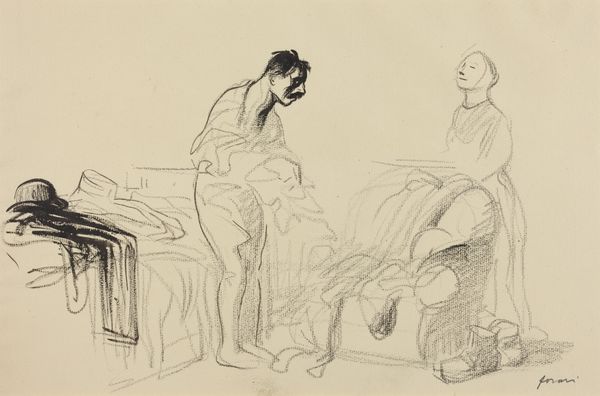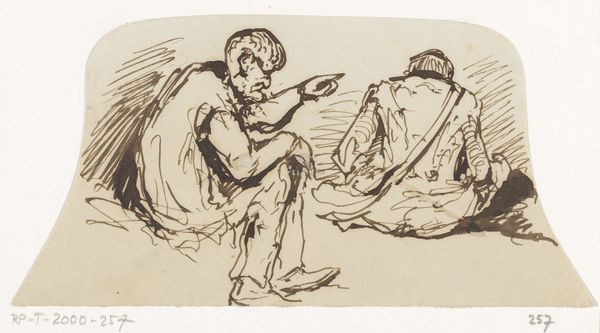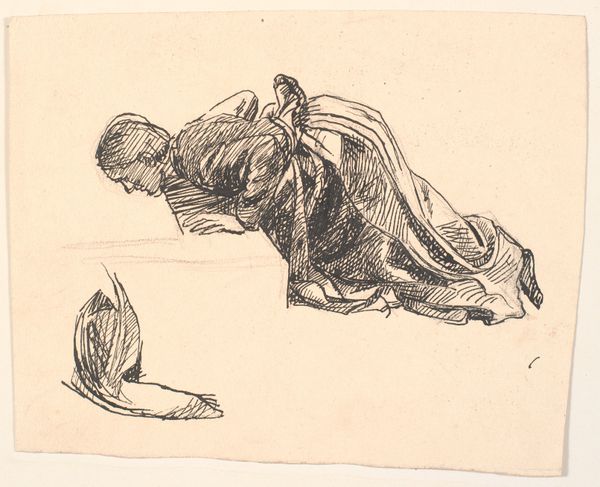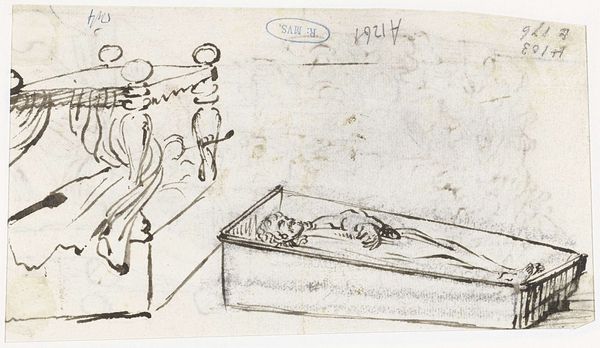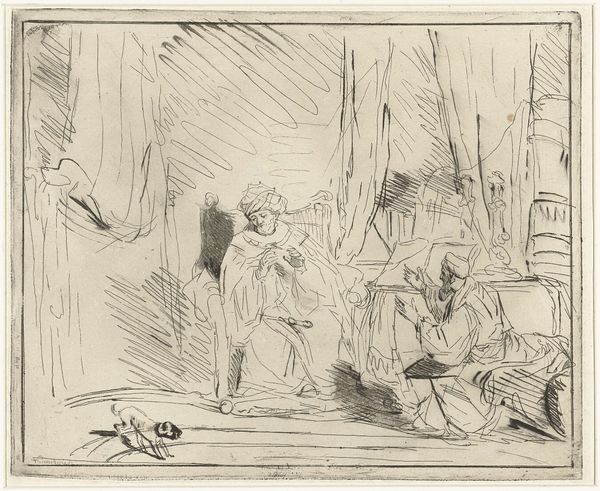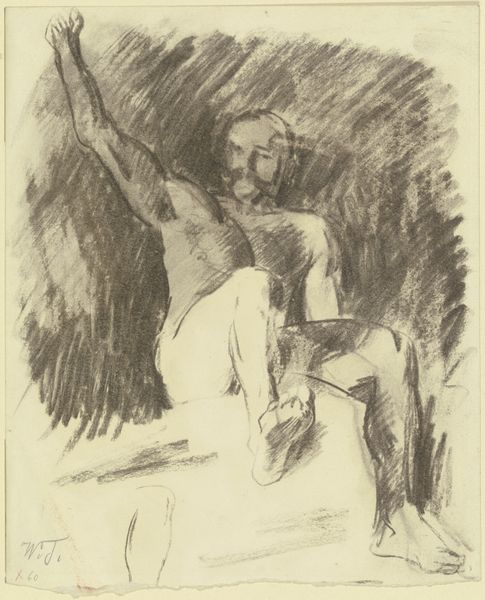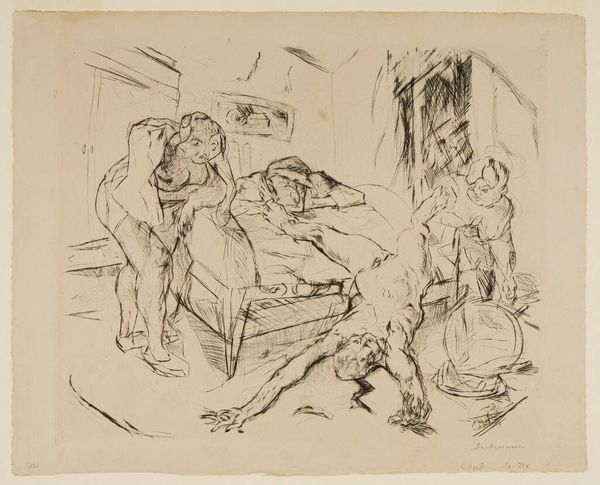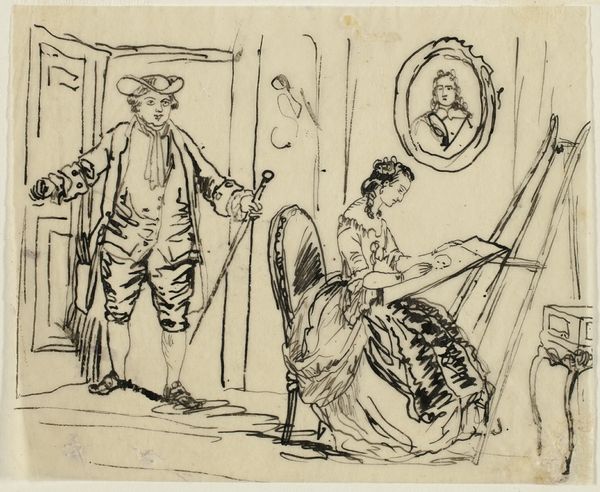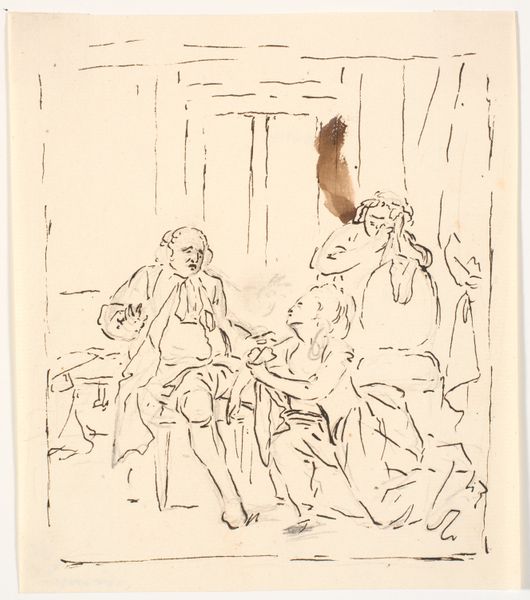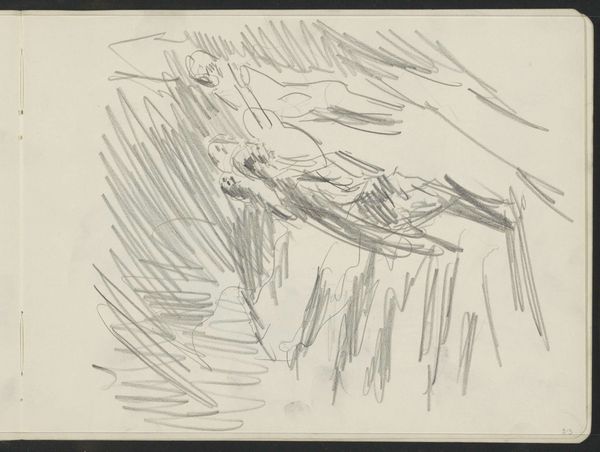
drawing, ink, pen
#
drawing
#
ink drawing
#
pen sketch
#
figuration
#
ink
#
pen
#
genre-painting
Dimensions: height 112 mm, width 137 mm
Copyright: Rijks Museum: Open Domain
Curator: Let’s consider this "Schetsblad," or sketch sheet, dating from 1840 to 1880, attributed to Johannes Tavenraat, and currently held at the Rijksmuseum. It's rendered in pen and ink. What are your first thoughts? Editor: The scene has a macabre playfulness, don't you think? The nonchalant figure juxtaposed with the dead game strewn about, dogs sketched in—there's a certain dark humor at play. Curator: Absolutely. I read it as a representation of class and hunting culture. This piece gives us a glimpse into the elite's leisure activities during that period and raises questions about the ethical considerations of hunting. Who are these animals for, and who profits? Editor: Right. Looking closely, the casual pose of the figure feels performative, a demonstration of dominance. But that's contrasted by the apparent disorder and violence in the sketch. Does this skew towards a critique of power? Is it intentionally revealing the brutal side of privilege? Curator: Perhaps. What’s also intriguing is the placement of the figure; they are slightly separated, removed from the most explicit carnage. It positions them as observers as much as participants. It evokes ideas about masculinity and its relationship to nature, or, more accurately, nature as something to be dominated by men. Editor: The dogs and the fallen birds certainly seem symbolic—perhaps speaking to gendered expectations around roles within a household at that time? Think: obedience and submission. How do societal values affect not just human characters, but also animals? Curator: Precisely. Beyond gender dynamics, these pieces could signify a social hierarchy upheld and maintained by violent practices normalized within specific social stratums, reflecting complex and multi-layered readings. Editor: Examining "Schetsblad" helps me reframe not just our perspective on art but of the socio-economic structure within which such items and lifestyles occur. What looks simple is frequently loaded! Curator: A potent reminder of art's function as a reflector of, and a participant in, societal narratives.
Comments
No comments
Be the first to comment and join the conversation on the ultimate creative platform.
